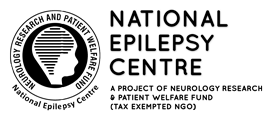Are Like a Lightning Storm Striking the Brain
Seizures are the clinical manifestation of epilepsy. They occur due to a sudden, temporary electrical storm occurring in the brain leading to a change in a person’s level of consciousness/awareness, behaviour with unnatural physical activity. Every person’s experience of a seizure is different but stereotyped to the person. The duration of a seizures few seconds to 2-3 minutes when timed properly. The frequency and pattern of seizures also vary.
Seizures can originate in the entire brain all at once or stay limited to one specific part of the brain or may then rapidly spread to affect the whole brain. Each part of the brain has a specific function to perform and the seizures appear with symptoms related to the function of the affected part of the brain.
It is important to note that all seizures do not occur because of epilepsy.
Brain Functions
The human brain is the command centre of the entire human body. It sends commands through electrical impulses carried by the nerves. An overview of the brain parts and their functions helps understand the different symptoms that occur in people during a seizure. The brain is made up of two hemispheres; the right hemisphere that is responsible for visio-spatial functioning (glossary) and visual memory whilst the left hemisphere for language function and verbal memory. Each hemisphere consists of six divisions.
-
Frontal lobes control thinking skills regulating emotional responses, impulse control, organization and planning of behaviour, concentration, memory retrieval and voluntary movements.
-
Temporal lobes organize sensory input, auditory perception, language and speech production, as well as memory formation and storage.
-
Occipital lobes help correctly understand what your eyes are seeing by making sense of visual information.
-
Parietal lobes process and integrate sensory information, such as taste, temperature and touch.
-
Cerebellum receives information from the sensory systems, the spinal cord, and other parts of the brain to regulate motor skills and movements.
-
Brain stem controls the flow of messages between the brain and the rest of the body. It also controls basic bodily functions such as breathing, swallowing, heart rate, blood pressure, consciousness, and states of wakefulness and sleep.
Seizure Phases
Seizures have three phases: an initial (prodrome), middle (ictal) and end (postictal).
Initial Phase/ Prodrome
Some people may notice some early signs hours or even days before the seizure starts. It is a warning of an oncoming seizure but not a part of the seizure. Some common signs include mood changes, anxiety, difficulty staying focused, headaches and behavior change. Prodrome is not part of the seizure.
Middle/ Ictal Phase
The middle active phase of a seizure is called ictal phase. A patient can have stereotypic symptoms indicating the person of an oncoming seizure. This is called an aura. Unlike prodrome, an aura occurs for < 10 secs. It is sensory in nature. Some motor signs like a few jerks can also occur. The person may be able to call for help or save from injury. Aura is part of the seizure manifestation but does not occur in all types of seizures.
Other common signs of this phase include loss of awareness / consciousness , confusion, disconnection from surroundings, unresponsive unable to hear or see, unable to speak, vocalization, automatisms, behavioural change, fall, convulsions, tongue bite and incontinence. A combination of a few of the above can occur. This lasts from a few seconds to 2-3 minutes.
Ending / Post-Ictal Phase
This is the recovery phase following an intense physical middle stage. It may last from a few minutes to a few hours and is not considered a part of the actual seizure. Some common signs and symptoms occurring during this phase include confusion, lethargy and fatigue, headache, body ache, nausea, vomiting, drowsiness or sleep. Some may have a temporary partial weakness of a body part.
Classification of Epileptic Seizures
Three important aspects to be considered when describing a seizure:
-
The onset or beginning in the brain; focal (a part) or generalized (entire).
-
Person’s level of awareness/consciousness.
-
Whether motor symptoms/movement occur.
On this basis the seizures are classified as:
Generalized Onset Seizures
Abnormal excessive electrical discharges occur on both sides of the brain at the same time. According to motor symptoms they are further sub- classified into tonic-clonic, tonic, clonic, atonic, absence and myoclonic. In most generalized seizures there is disturbance in consciousness however, in myoclonic seizures the person is fully aware.
Focal Onset Seizures
Focal seizures start in a group of cells in one side of the brain. They may be limited to that area only or then spread to the entire brain.
Focal Onset Aware
When a person is aware and fully conscious during a seizure. These seizures may show motor activity such as involuntary, brief jerking of an arm or leg or sensory events like electric current like sensation or numbness of a part of the body, an unpleasant smell or taste, or sensations such as butterflies or nausea. These seizures were previously called simple partial seizures. Aura described above is in fact is a focal onset aware sensory seizure.In some cases, this type of seizure can precede another seizure type like generalized tonic-clonic/tonic/clonic.
Focal Onset Impaired Awareness
During these seizures the person may appear confused and dazed, and may do strange repetitive actions such as fiddling with their clothes, making chewing, gulping, pouting or lip-smacking movements with their mouth or uttering unusual sounds or repetitive words. These seizures were previously called complex partial seizures. Some focal motor activity can also occur.
Focal to bilateral tonic-clonic
As mentioned above, sometimes focal onset seizures spread to become generalized. Previously they were called secondary generalized seizures.
Unknown Onset Seizures
When the beginning of a seizure is not known, it’s called an unknown onset seizure. People who experience these may have varied states of awareness. A seizure could also be called an unknown onset if it’s not witnessed or seen by anyone, like in a person who lives alone or when seizures occur at night in deep sleep. Investigations may later help diagnosing it as focal or generalized seizure.
Epilepsy Syndromes
When a disorder is defined by a characteristic group of features that usually occur together, it is called a syndrome. Epilepsy syndromes are defined by a cluster of features and include:
-
Type or types of seizures
-
Age at which seizures begin
-
Cause of seizures
-
Whether seizures are inherited
-
Part of the brain involved
-
Factors that provoke seizures
-
Severity and frequency of seizures
-
Pattern of seizures by time of day
-
Certain patterns on the EEG, during and between seizures
-
Brain imaging findings; MRI or CT scan
-
Genetic information
-
Other disorders in addition to seizures

